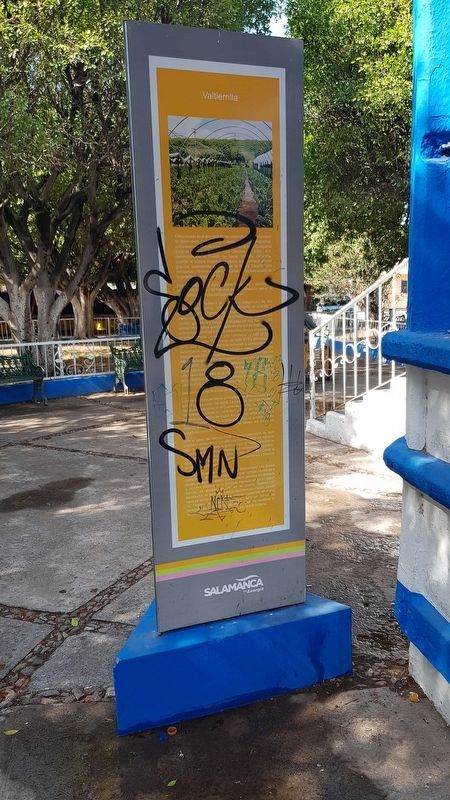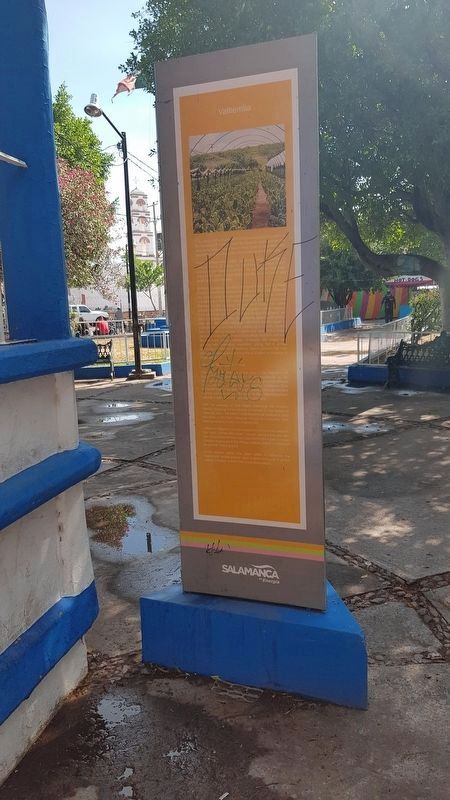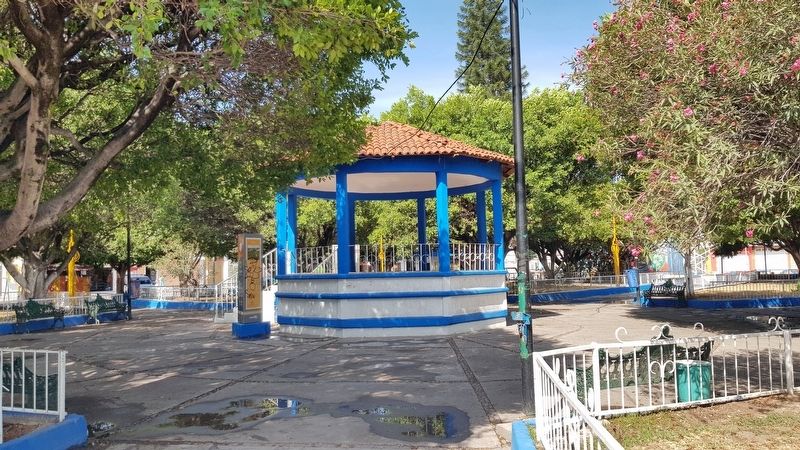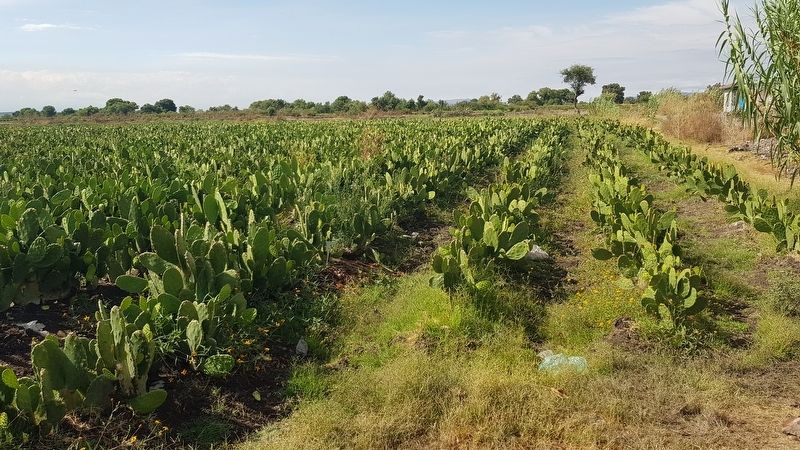Valtierrilla in Salamanca, Guanajuato, Mexico — The Central Highlands (North America)
Valtierrilla
Estos espacios eran denominados “estancias” y constituían una fuente modesta de ingresos para la población nativa, la cual trabajaba para los caciques españoles.
La estancia de Baltierra se ubicó en el margen sur del Río Grade (hoy Lerma), dividida en Baltierra el Grande y Baltierra el Chico, siendo esta última la que derivó en la actual Valtierrilla y se dedicaba principalmente a las labores del campo, ganadería y pesca, por el paso de hoy Río Laja. La población indígena que trabajaba en ella era de origen otomí, cultura que comenzó a formar pequeñas chozas alrededor de la estancia hasta constituir una “ranchería” y más tarde en calidad de Pueblo. Ya a finales del siglo XVII y principios del XVIII, esta pequeña ranchería comenzó a consolidarse: se seccionaron los terrenos, se abrieron calles, las chozas fueron sustituidas por cuartos de adobe y paja y se edificó una capilla dedicada a la Santa Cruz con su atrio y Plaza Principal (hoy jardín del poblado). Paulatinamente, el pueblo fue creciendo conforme aumentaba su población, dando origen a una nueva comunidad de la Villa de Salamanca, siendo en la actualidad la más importante y poblada de las comunidades del actual municipio de Salamanca, Gto.
Con el paso del tiempo, inició la comercialización de este producto, procurando con ello una nueva fuente de ingresos para los valtierrillenses. Al poco tiempo, la venta del nopal se convirtió en la columna vertebral de la economía del poblado, pues en torno a su producción se han generado, hasta la fecha, cientos de empleos formando cooperativas y fábricas en las que se procesa el nopal.
Los pobladores de Valtierrilla han desarrollado una buena cantidad de productos a base de nopal: tortillas, crema para la piel, gel para el cabello, dulces, nieve, gelatina, mermelada y muchos platillos cuyo principal ingrediente es el nopal, incluso es posible adquirir en el pueblo nopales en escabeche, en salmuera y nopal deshidratado molido. Desde hace ya varios años se lleva a cabo en Valtierrilla, en el mes de Febrero, la famosa Exponopal, feria en donde las personas dedicadas al cultivo de este tipo de cactácea se reúnen para mostrar y vender sus productos al visitante.
These spaces were called “estancias” and constituted a modest source of income for the native population, which worked for the Spanish overlords. So, around the “estancias” were small native villages that gradually became larger and larger population centers.
Baltierra “estancia” placed on
the south bank of the Big River (Today Lerma River) divided into Baltierra The Great, Baltierra the Small, being this last one, being that led to the current Valtierrilla and is mainly engaged in field work, livestock and fisheries by the passage of Laja River today. The native people who worked on it was Otomí origin, culture began to form small huts around the “Estancia” to be a “Ranchería” and later to the level of Pueblo. Since the late seventeenth century and early eighteenth centuries, this small hamlet began to consolidate: the land were cut, streets were opened, the huts were replaced by houses of adobe and straw and a chapel dedicated to the Holy Cross with its atrium was built and Main Square (now garden village). Gradually, the village was growing with increasing population, giving rise to a new community of Villa de Salamanca, and is currently the most important and populous communitie of present municipality of Salamanca, Gto.
With the passage of time began marketing this product, thereby ensuring a new source of income for the people of Valtierrilla. Soon, the sale of nopal became the backbone of the economy of the town, because around its production have been generated to date, hundreds of jobs.
Valtierrilla villagers have developed a lot of products based on the nopal: tortillas, skin cream, hair gel, candy, snow, jelly, jam and many dishes whose main ingredient is the nopal; it is even possible to acquire in the village nopales pickled in brine and dehydrated nopal ground.
Since several years now takes places in Valtierrilla the Exponopal, where people used to grow this type of cactus gather to display and sell their products to visitors.
Topics. This historical marker is listed in these topic lists: Agriculture • Colonial Era • Settlements & Settlers.
Location. 20° 31.728′ N, 101° 7.776′ W. Marker is in Valtierrilla, Guanajuato, in Salamanca. Marker is on Calle de la Revolución just east of Calle Juan de la Barrera, on the left when traveling east. Touch for map. Marker is in this post office area: Valtierrilla GTO 36883, Mexico. Touch for directions.
Other nearby markers. At least 8 other markers are within 10 kilometers of this marker, measured as the crow flies. The Virgin of Guadalupe Church (within shouting distance of this marker); The Old Temple (within shouting distance of this marker); The Rectory and Sanctuary of Guadalupe (approx. 8.2 kilometers away); The Augustinian Ex-Convent of San Juan de Sahagún (approx. 8.3 kilometers away); Miguel Hidalgo y Costilla (approx. 8.4 kilometers away); The Miguel Hidalgo Civic Plaza (approx. 8.4 kilometers away); The Temple of Saint Augustine (approx. 8.4 kilometers away); The Temple of Jesus the Nazarene of the Three Falls (approx. 8.5 kilometers away). Touch for a list and map of all markers in Valtierrilla.
More about this marker. This marker is a duplicate of the Valtierrilla marker located in the Main Garden Square of Salamanca, Guanajuato.
Credits. This page was last revised on May 13, 2018. It was originally submitted on May 13, 2018, by J. Makali Bruton of Accra, Ghana. This page has been viewed 369 times since then and 64 times this year. Photos: 1, 2, 3, 4. submitted on May 13, 2018, by J. Makali Bruton of Accra, Ghana.



